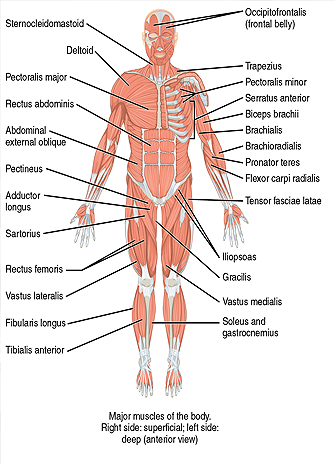The fifth annual Muscle Health Awareness Day will feature the latest research on muscles by several scientists working in the field.

How do glucose and fatty acids get metabolized? That’s what speaker Rolando Ceddia, a professor in York’s School of Kinesiology and Health Science will be discussing. In particular, Ceddia will look at how various therapeutic approaches, such as exercise, pharmacological products and diet management, affect metabolism in both skeletal muscle and adipose (fat) tissue.
Minna Woo, a scientist of the Keenan Research Center and Staff Endocrinologist, St. Michael’s Hospital and a professor medicine and medical biophysics at the University of Toronto, will discuss the roles specific molecules play in determining cell survival and function. That includes their role in cell death, tumor suppression and oncogenesis. Woo’s research has implications for greater understanding and treatment of diabetes.
The Muscle Health Awareness Day will be held Friday, May 23, from 9am to 4:30pm, at 103 Life Sciences Building, Keele campus. Registration is $20 for faculty members and $15 for students. Registration includes a light breakfast, buffet lunch and coffee.
The day will feature a series of lectures and graduate student poster presentations related to muscle adaptation, development, metabolism and disease.

Also speaking about their research at the event will be Joe Chakkalakal of the Center for Musculoskeletal Research, Rochester University; Dr. Ronald Cohn, Clinical and Metabolic Genetics, Sick Kids/University of Toronto; Penney Gilbert of the Institute for Biomaterials and Biomedical Engineering, University of Toronto; Brendon Gurd of Kinesiology and Health Studies, Queen’s University; David MacLennan of the Banting and Best Department of Medical Research, University of Toronto; Jeremy Simpson of Human Health and Nutritional Sciences, University of Guelph; and René Vandenboom of Applied Health Sciences, Brock University.
Gurd’s work focuses on comprehending the impact of exercise intensity and various forms of exercise on mitochondrial function. In particular, his research examines the effect of these factors on the molecular regulation of mitochondrial biogenesis, and how this differs in individuals new to or accustomed to exercise training.

MacLennan is famed for his contributions to the structure and function of proteins mediating calcium ion transport, and in particular, those that regulate calcium flux through the sarcoplasmic reticulum in muscle. He has also led research teams that have defined the genetic basis for several muscle diseases, including malignant hyperthermia, central core disease and Brody disease.
Cohn’s research has emphasis on the molecular mechanisms of muscle regeneration and fibrosis in inherited and acquired myopathic conditions. Furthermore, Cohn is investigating the translation of next-generation sequencing techniques into daily clinical diagnoses and management.
Vandenboom’s research focuses on the role of calcium in the translation of chemical signals for contraction into a mechanical response. In particular, Vandenboom has concentrated on delineating the relationship between muscle force potentiation and muscle fatigue.

Chakkalakal’s work surrounds alterations in age-related signaling mechanisms associated with the growth and regeneration of skeletal muscle. Specifically, work in identifying a molecular signature of the changes to the satellite cell pool during aging aims to provide insight into how we can promote and maintain optimal skeletal muscle function.
Simpson has investigated the molecular adaptations of the heart to chronic overload, typically observed during hypertension and cardiac disease. His work has also extended into the examination of hypoxic stimulus in muscle signaling, in addition to modifications in skeletal muscle proteins during fatigue and ischemia.
Gilbert’s lab researches the use of biomaterial approaches to aid in the treatment of skeletal muscle wasting. In particular, her focus has been in the use of biomimetics to support the expansion of the muscle stem cell network, as well as the regulation of stem cell fate to control tissue regeneration and the synthesis of replacement muscle tissue.
For updates and more information, visit the Muscle Health Research Centre website or email mhrc@yorku.ca.


